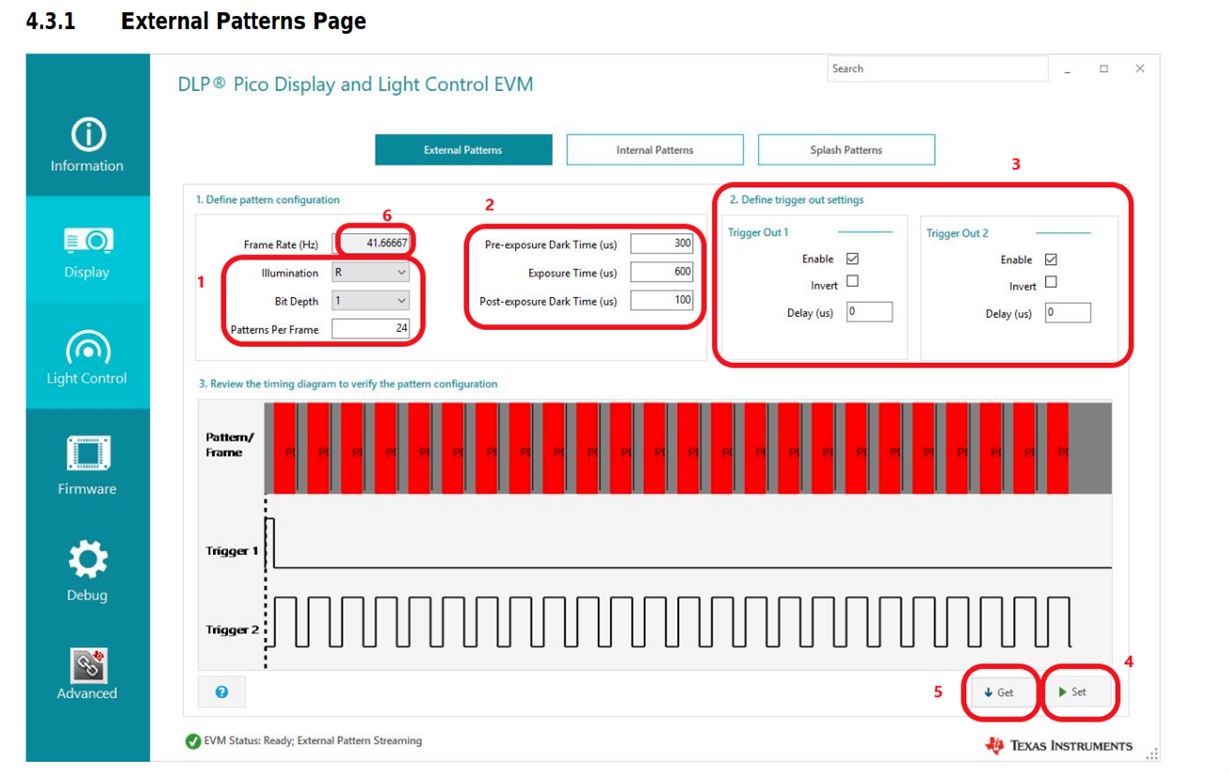Other Parts Discussed in Thread: DLPC3479, DLPC-API
Hi TI,
I have some questions regarding DLP4710EVM-LC, could you please give me a hand?
I want to project a series of 2D images (not vertical or horizontal lines) and want to know my option is with 4710EVM-LC.
(1) Can 4710 EVM-LC store more than 4 splash images (GUI only shows 4 but how many images or size can it store)?
(2) If I project a series of images (single color, I think I can set bit depth to 1, frame by frame from PC), using external pattern mode (via HDMI). Will projector detect the image (frame) change and set trigger 1 to high at the beginning of each new frame? How many frames can I project in 1s?
Thanks!
Derlin




